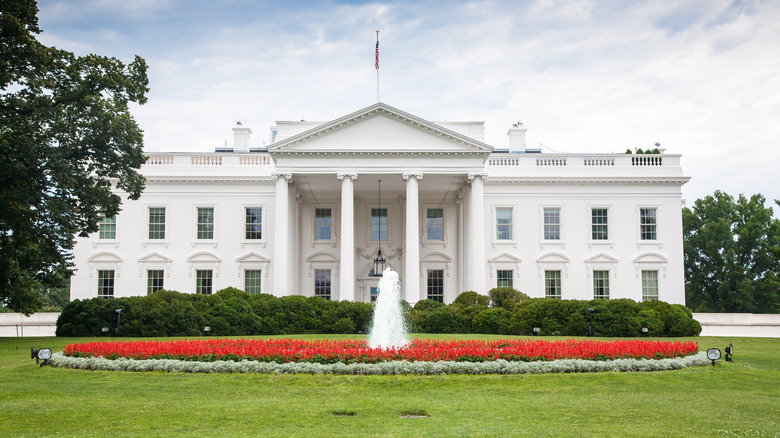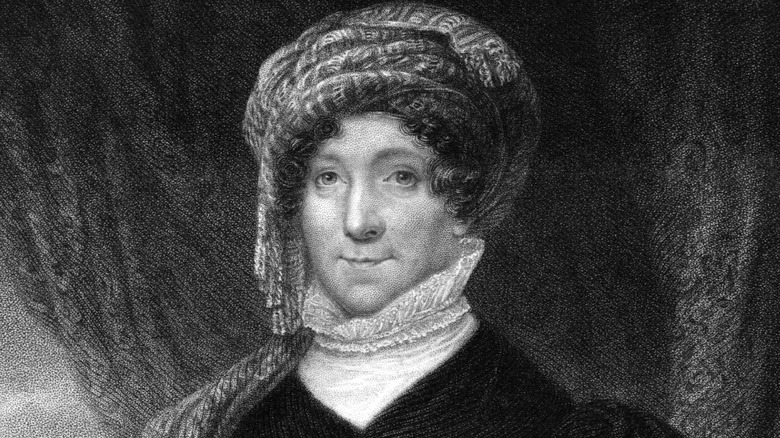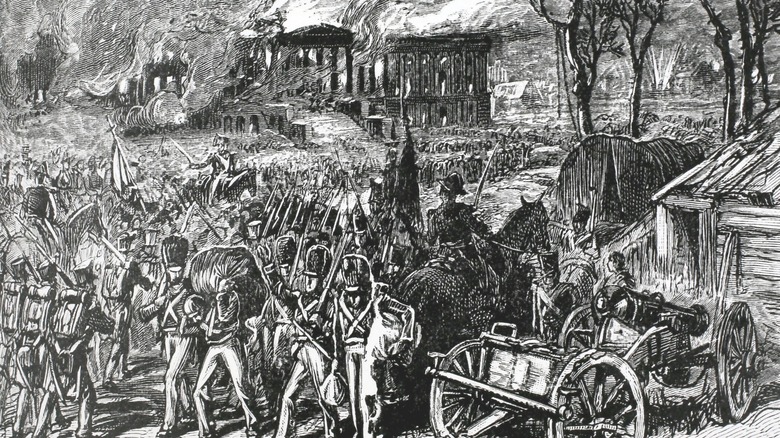How The White House Got Burned During The War Of 1812
The War of 1812 officially started on June 18, 1812, although tensions between the United States and Britain had been simmering for years prior. According to History, the two countries had been engaged in a bitter conflict over trade since 1807, when Britain attempted to prevent the U.S. from trading with France, with whom they were at war. Tensions over trade restrictions combined with squabbles over territory expansion culminated in the summer of 1812, when President James Madison finally pushed a declaration of war on Britain through Congress, per Mental Floss.
The ensuing War of 1812 was a very influential war. Yet, one of its defining events was not a battle but the burning of Washington. On August 24, 1814, 4,500 British troops marched into Washington, D.C., following a victory in Bladensburg, Maryland, and captured and set fire to the White House, the Capitol, and several other buildings. The attack on the capital was partially fueled by a desire for retaliation against the Americans for their destruction of the Upper Canadian capital city of York, which they had attacked and looted the previous year during the Battle of York, on April 27, 1813, according to The Friends of Fort York.
Dolley Madison saved important state papers from destruction
Per the Architect of the Capitol, the British troops, led by Vice Admiral Sir Alexander Cockburn and Major General Robert Ross, began their destruction of Washington, D.C., around 8 p.m. They ransacked, looted, and then set fire to the White House, which was then called the Presidential Mansion.
By the time the troops arrived, President Madison and his wife, Dolley Madison, had already evacuated the city. The president had fled the White House on August 22 and spent the next few nights with his generals in Maryland. The first lady stayed behind with a few servants to rescue important state papers and a full-length portrait of George Washington. According to History, before escaping to meet her husband at a prearranged meeting place, she wrote to her sister: "And now, dear sister, I must leave this house, or the retreating army will make me a prisoner in it by filling up the road I am directed to take."
A thunderstorm helped extinguish the fires
The British forces went on to burn several other important Washington landmarks and government buildings, including the Capitol Building — which contained the chambers of the Supreme Court, the Senate, the House of Representatives, and the Library of Congress — the navy yards, and American warships in an occupation of the capital city that lasted for just over 24 hours, according to Architect of the Capitol. Luckily, a torrential rainstorm swept into the city less than one day later, putting out much of the flames and saving the capital from complete destruction, but not before the fires did significant damage to the Capitol's Senate wing, the marble columns, and a collection of valuable books that had been housed in the Library of Congress, according to the U.S. Senate.
Although the first family returned to the city just three days later, they never returned to the Presidential Mansion. President Madison lived out the rest of his presidency in the Octagon House, leaving the White House empty until his successor, James Monroe, moved into the newly reconstructed building, per History. To this day, the burning of Washington in 1814 remains the last time in U.S. history that a foreign power has occupied the nation's capital.


